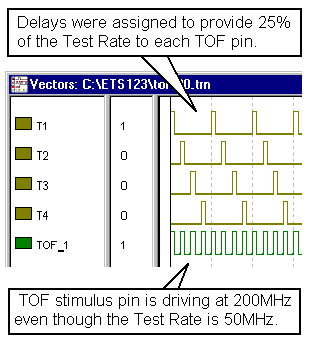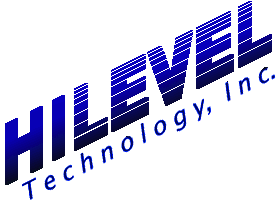For some tester manufacturers, the question of the "true" definition of data
rates (or clock rates) has been an issue of "specmanship"
more often than it has been of service to those seeking the "truth".
Since these variations can be frustrating, we at HILEVEL would like offer
our definition of data and clock rates and try to help you understand
how other views can vary.
What Happens in the ETS?
One of the most important points we wish to make clear is that the HILEVEL basic program cycle is 20ns (i.e., 50MHz). This means that data is retrieved from RAM, formatted, processed and driven (as well as received in the case of DUT outputs) all within a single program cycle, including loops, branches and other programmed instructions. Not all testers do this; some employ muxing tricks, with the resulting idiosyncracies. We put a great deal of effort into developing a custom chip specifically for the purpose of performing these operations in a single cycle.
Obviously a higher clock rate compels the need for better resolution. Pin-to-pin skew is equally important for insuring accuracy at higher speeds. At 500MHz, how meaningful is a 2ns cycle time if the edge placement resolutions is no better than 100ps? The HILEVEL ETS770 delay resolution is 50ps, allowing for excellent resolution in such situations. And where skew relationships are extremely critical, we provide the tools for manual deskew between pins in critical data paths.
Bidirectional Data
HILEVEL's classification of the basic data rate is somewhat simplistic;
the "Test Rate" as defined in the Run Setup window reflects the
bidirectional data rate. You can provide stimulus to the device at 2X,
3X or 4X the data rate (or "Test Rate" defined in the Run Setup
window), but the acquisition of DUT output data is done at 1X --
in other words, at the defined Test Rate.
Stimulus Data
To acheive 2X, 3X or 4X stimulus data rate, the Timing On-the-Fly
feature is employed (TOF). This feature is covered in the ETS manual and
the online Help file that comes with your ETSNT software. Some additional
system resources are consumed in this mode, but data rates of up to 200MHz
are possible with TOF. See the example of how a 200MHz clock is created.



#L24